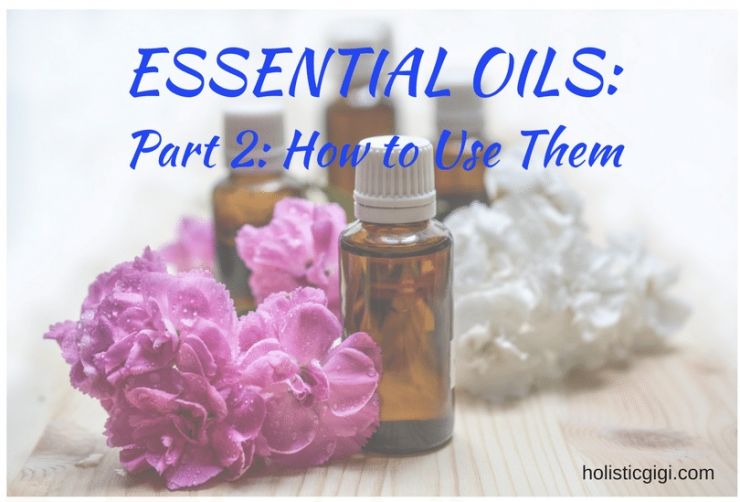
In Part 1 of this series, I explained what essential oils are and how to choose a company and oils that are right for you. In this post, I’ll cover to the practical ways to use them including blends and DIY recipes.
Ways to use them
1. Topically
Apply to skin neat (directly from bottle) or diluted (adding a carrier oil to decrease potency). Not all oils can be applied neat (undiluted) so check your sources before using in this way. Commonly used carrier oils are sweet almond, fractionated coconut oil, grapeseed oil, jojoba oil, and avocado oil. When you apply your oils to areas of the body that need support, they reach the bloodstream within 20 seconds and are then distributed throughout the body within 20 minutes. Remember they are VERY POTENT! I am a believer in diluting the oils to avoid skin sensitivity and ALWAYS dilute for children.
You can apply oils to a problem area or as close to area as possible. An acronym to remember is FEW: bottoms of feet, behind the ears, on the wrist – apply to these areas with large pores where the oils will absorb quickly.
Other places to apply are the Pulse Points: neck, wrist, over your heart, down by ankles, along spine as well as Reflexology Points are also safe areas that can target areas of need. Example-for thyroid apply on neck or below big toe.
2. Aromatically
This involves inhaling oils through your nostrils. It can be as simple as putting a drop in the palm of your hands, cup your hands to your nose and inhale! You can put a few drops in a steaming mug of hot water or use in a hot shower or bath.
• Ultrasonic diffusers are the easiest and most economical to use. They use water and a few drops of essential oils to create a cool mist that releases the essential oils into the air. Most come with lights so make sure there is a separate switch for the lights and the mist.
• Heat diffusers heat an absorbing pad onto which you drop your essential oils, then a fan broadcasts the aroma. These are great for small rooms or on the go locations. Most run on batteries or have a USB port.
3. Internally
Please do not assume it is okay to use any brand of oil internally as purity varies greatly. If safe for consumption, the bottle will clearly be labeled if it is approved for internal use.
I’ve personally chosen not to use essential oils internally because of my Hashimoto’s Thyroiditis. This is a personal decision that you must make for yourself after doing your research.
Cautions
- Avoid applying oils close to mucous membranes on the face, eyes, the inner ears, internally on genitals, and directly on broken or damaged skin.
- Don’t try to wash oils off with water. If you have a reaction to an oil, use a carrier oil to dilute.
- Children should avoid Cooling oils: camphor, peppermint, lemongrass, ocotea, spearmint, wintergreen, eucalyptus, thyme, due to the menthol in the oils that can potentially slow or stop breathing and Hot oils: oregano, cassia, cinnamon, clove, hyssop.
- Patch Test for topical application, especially if you have sensitive skin. Some essential oils may cause an allergic reaction like itching, burning, redness, or swelling to a specific oil. Each person is going to react differently to each essential oil.
- Apply it to sensitive areas of the body like the inner wrist, inner elbow, and the backs of the knees. Leave on for 12-24 hours to determine if that oil is safe for you to use topically. Test two different areas at once as a sort of control. This helps you estimate the best dilution ratios that are comfortable for you and your family.
- Some oils have Photosensitivity which means that you shouldn’t expose skin to the sun where you have applied citrus oils because it can cause rash or sunburn. These oils include: lemon, lime, wild orange, grapefruit, bergamot.
Dilution
Use stickers for labeling your dilutions so you know what is in each bottle and use this dilution guide.

Rollerballs
I highly recommend diluting essential oils in rollerballs. Buy 6 glass rollerballs that you can use for all of your dilutions. Carefully use the dilution chart shown above. Dropper oils into the bottle and then fill with carrier oil of your choice. Insert rollerball and tightly cap. Label with stickers.
How do I use them?
Favorite Diffuser Blends






DIY Recipes
1. Thyroid blend
2. Oil Based Facial Wash
3. Dryer Wool Balls Freshening Spray
Spray onto dryer balls.
Comment on your favorite way to use essential oils!
